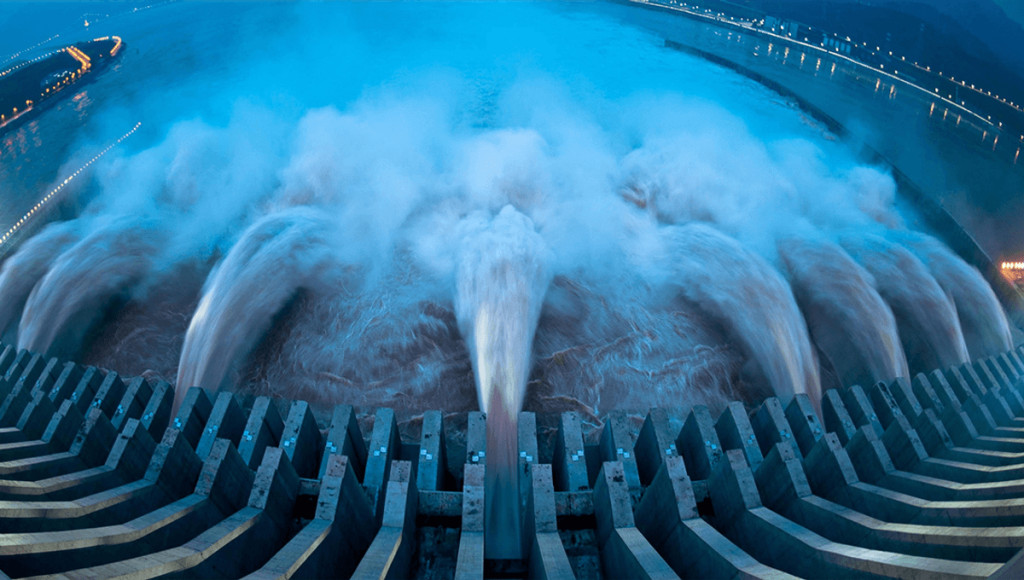“Three Gorges Dam In Space”: China Reveals Plans To Build Giant Power Station In Earth’s Orbit – IFLScience

CLOSEWe have emailed you a PDF version of the article you requested.Please check your spam or junk folder You can also addnewsletters@iflscience.comto your safe senders list to ensure you never miss a message from us.CLOSEComplete the form below and we will email you a PDF versionGET PDFCancel and go backIFLScience needs the contact information you provide to us to contact you about our products and services. You may unsubscribe from these communications at any time.For information on how to unsubscribe, as well as our privacy practices and commitment to protecting your privacy, check out ourPrivacy PolicyCLOSEComplete the form below to listen to the audio version of this articleListenCancel and go backIFLScience needs the contact information you provide to us to contact you about our products and services. You may unsubscribe from these communications at any time.For information on how to unsubscribe, as well as our privacy practices and commitment to protecting your privacy, check out ourPrivacy PolicyAdvertisementSearchSubscribe today for our Weekly Newsletter in your inbox!Subscribe today for our Weekly Newsletter in your inbox!James FeltonJames FeltonSenior Staff WriterJames is a published author with four pop-history and science books to his name. He specializes in history, strange science, and anything out of the ordinary.BookView full profileBookRead IFLScience Editorial PolicySenior Staff WriterKaty EvansManaging EditorKaty is Managing Editor at IFLScience where she oversees editorial content from News articles to Features, and even occasionally writes some.BookView full profileBookRead IFLScience Editorial PolicyDOWNLOAD PDF VERSIONThree Gorges Dam in China would be cooler in space.Image credit: isabel kendzior/shutterstock.comDOWNLOAD PDF VERSIONChina has revealed plans to build a gigantic power station in space, comparing the project to building Three Gorges Dam 36,000km (22,370 miles) above the Earth.While the world continues to guzzle down oil like we aren’t aware of the climate crisis, more long-term thinkers are working on ways to make renewable energy like solar power more efficient. Though we have greatly improved on solar power in the last few decades, there is one ambitious way we could potentially give it a real boost; moving solar panels slightly closer to the Sun.The idea of creating a space-based power station has been around for a while. Potential advantages of such a station include that solar panels would be able to collect more energy without the Earth’s atmosphere reflecting and absorbing it away, and the fact that it could move around the Earth, perpetually collecting sunlight. Collecting energy in space may sound useless, unless you live in space or have a really long chain of extension cables. But the idea is to wirelessly transmit the energy back to Earth through high-energy radio waves to receivers on the ground. One of the main problems to overcome, which China hopes to address with a new Long March-9 (CZ-9) reusable super-heavy rocket, is getting the many pieces needed into orbit. With this rocket, intended also to take Chinese astronauts to the Moon, the country hopes to begin work on the array.“We are working on this project now,” Long Lehao, a rocket scientist and member of the Chinese Academy of Engineering (CAE), said in a lecture, per South China Morning Post. “It is as significant as moving the Three Gorges Dam to a geostationary orbit 36,000km (22,370 miles) above the Earth.”When complete, the orbiting power station would be expected to produce significant amounts of power for people below. Really significant power.”This is an incredible project to look forward to,” Long continued. “The energy collected in one year would be equivalent to the total amount of oil that can be extracted from the Earth.”The timescale for the project has not yet been released by China, but unless it really gets a move on it is unlikely to become the first nation to create an orbiting power station. Iceland, collaborating with UK company Space Solar, plans to create a smaller space solar array by 2030, capturing enough energy to potentially power 1,500 to 3,000 homes, before an upgraded power station in 2036.Though an awesome idea in theory, it remains to be seen how efficiently scientists can make the power transfer back to Earth. It has been done before, by Caltech engineers in 2023, but on the scale of milliwatts. China, when it launches the new orbiting power station, will hope to surpass this by quite a wide margin.solar power,energy,renewable eneregy,space solar powerlink to articlelink to articlelink to articleAdvertisementAdvertisementAdvertisementlink to articlelink to articlelink to articleSign up today to get weekly science coverage direct to your inbox© 2025 IFLScience. All Rights Reserved. RSS



